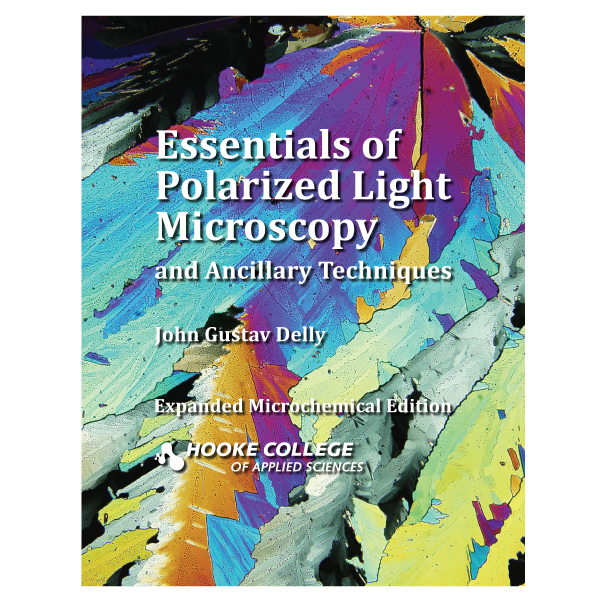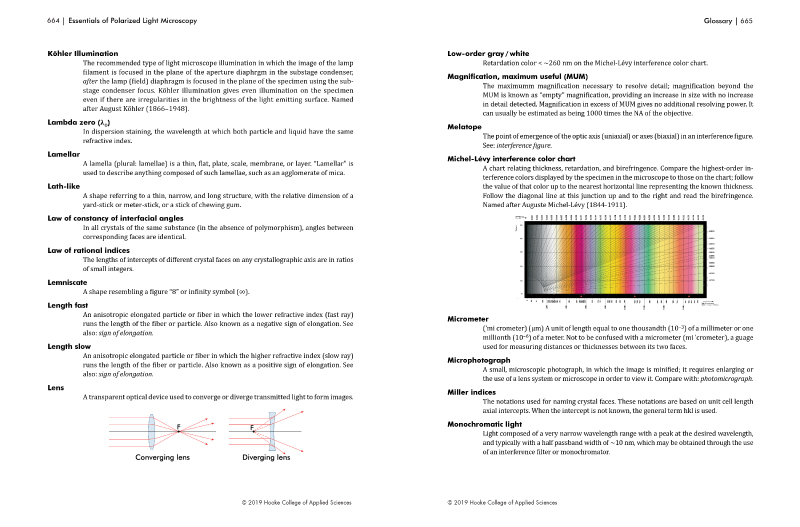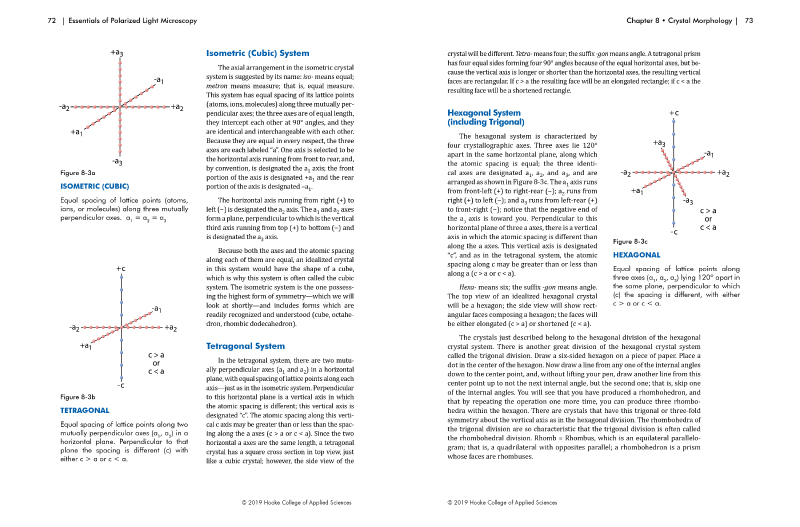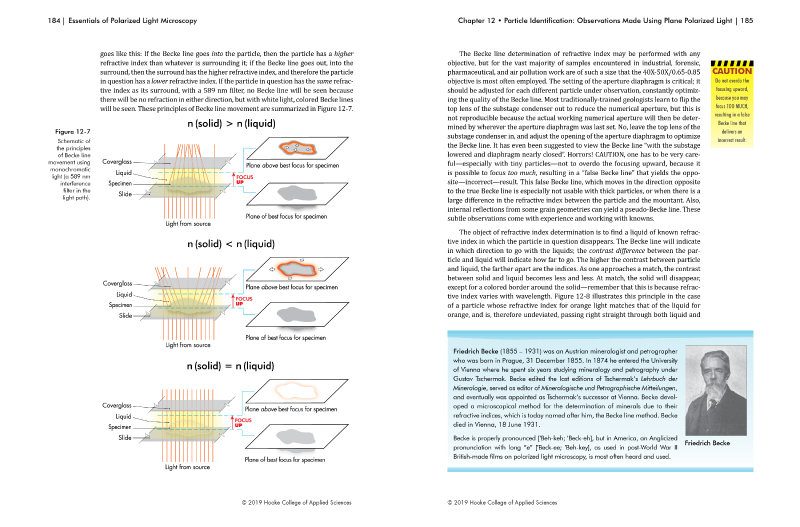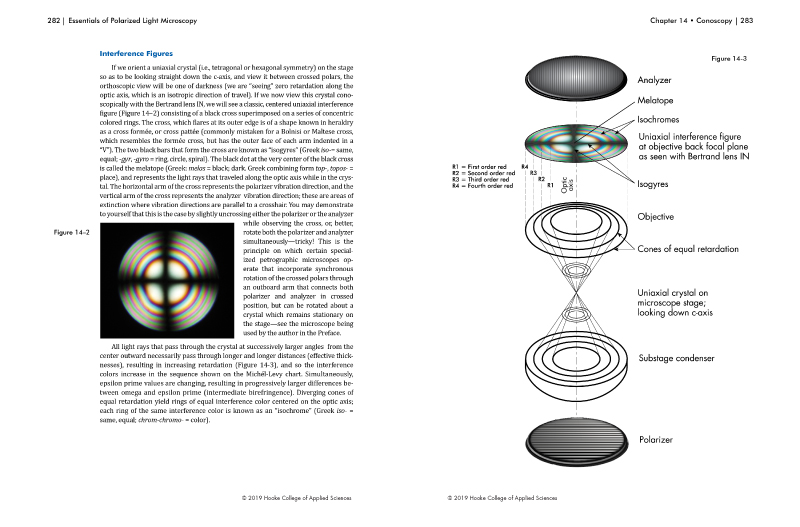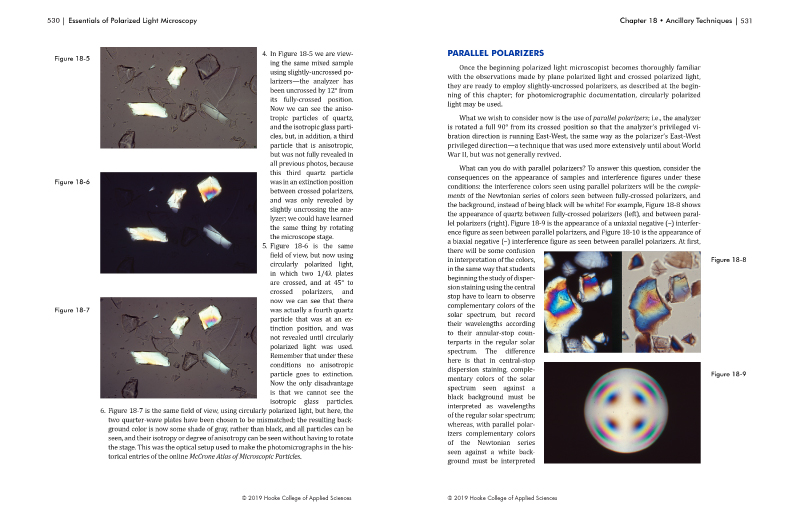2nd Edition, Essentials of Polarized Light Microscopy and Ancillary Techniques
SKU:701-2
John Gustav Delly
2nd Edition, 2019, pp. 702. Hardcover.
In this second edition, the microchemical tests are illustrated in color under several microscopical lighting conditions, with added directions, notes, cautions, sensitivity of reactions, and a bibliography as to page and figure number to the reactions in books in English, German, French, and Russian.
Learn about our online, on-demand Polarized Light Microscopy course.
$150.00
About This Book
This manual of essentials for the setup, operation, and application of a polarized light microscope for microscopic particle characterization and identification grew out of a need on the part of the Hooke College of Applied Sciences, a member of The McCrone Group, for a suitable modern textbook for use in their microscopy courses.
Culled from the author’s encyclopedic knowledge and experience in polarized light microscopy, Essentials of Polarized Light Microscopy and Ancillary Techniques is a culmination of seventy-plus years of microscopy know-how, skills, and techniques boiled down into its essential elements. Written in an accessible style supported by abundant color photos and illustrations, it almost feels like the author is standing over your shoulder, guiding you along through your study of polarized light microscopy. This kind of writing is rare to find in a field where the few texts on this subject can often get bogged down in difficult to understand language and concepts. It is also loaded with valuable bibliographic references, some of which are annotated by the author.
This text is a fresh approach to applied polarized light microscopy suitable for such diverse applications as contaminant identification, bioterrorism and other hazardous material identification, trace evidence analysis, household dust and air pollution analysis, and many more. In addition to its use in Hooke College classes, the present edition will also find use in other institutions of learning, and can be used for independent study.
In this second edition, the microchemical tests are illustrated in color under several microscopical lighting conditions, with added directions, notes, cautions, sensitivity of reactions, and a bibliography as to page and figure number to the reactions in books in English, German, French, and Russian.
View the Table of Contents.
About the Author
John Gustav Delly is professor emeritus of chemical microscopy at The McCrone Group’s Hooke College of Applied Sciences and scientific advisor at McCrone Associates in Illinois. He has more than 50 years of experience in microscopical research, particularly contaminant identification. He has taught courses in microscopy and photomicrography, and developed microscopy training for specific industries. A designer of microscopical accessories, he is the author of more than 500 publications, including Kodak’s Photography Through the Microscope. During his professional career, he was a member of the Royal Microscopical Society, the Quekett Microscopical Club, the Postal Microscopical Society, the New York Microscopical Society (former educational chairman), the State Microscopical Society of Illinois (1995 National Award Recipient and honorary member), the Microscope Historical Society, the Microscopical Society of Southern California, the American Chemical Society, and the American Scientific Glassblowers Society. He has also served as an adjunct professor at Rochester Institute of Technology, and has judged entries for photomicrography competitions, including Nikon’s Small World and the Polaroid Instant Photomicrography Competition.
View or download the Table of Contents for Essentials of Polarized Light Microscopy and Ancillary Techniques.
View:
Reviewed by Fay Goldblatt:
The comments in my review of the 2017 first edition are still valid as most of the volume remains unchanged. Essentials is now even more essential though. John Gustav Delly is the maestro of polarized light microscopy, not just as expert master microscopist, but as a master teacher. His writing is clear, precise and understandable for the novice as well as the long time chemical microscopist.
This new edition has replaced Chapter 15 on microchemistry. This chapter has been mostly rewritten and is now a full 133 pages. The black-and-white photomicrographs showing the crystals obtained for each test have been replaced with full-color photomicrographs in plane polarized light, with crossed polars, and with crossed polars and a first-order red compensator. Each test gives the cation or radical being tested, the procedure, reactions expected, and observations. Also given are notes which include extra tips and several references, each of which indicate the figure and page number in the original volume, be it in English, German, French or Russian. This is more globally useful for those interested in exploring original sources. Retained from the previous edition are the Table of Solubilities, Valences of Common Elements, and the Periodic Table of the Elements. A brief history of this table is interesting reading, and is followed by information on the “chemist’s” inverted microscope. Laboratory exercises for microchemical and spot tests are retained from the previous edition. The final section of this greatly expanded and revised chapter gives 125 references dating from 1827 to 2007, published in English, German, French, and Russian. There are an additional 17 references on the Periodic Table dating from Boyle (1661) to Scerri (2007).
The rest of the volume retains the amazing amount of well-illustrated features and material seen originally. Of course, Mr. Delly fully explains the polarized light microscope in all its parts and accessories, micrometry, crystal morphology, particle identification, fluorescence microscopy, and other contrast methods. The chapter on optical crystallography titled “conoscopy”, gives full explanations of how the optical indicatrix (interference figure), is obtained and its interpretations in understanding what one sees with crossed polars. This chapter is profoundly useful for understanding the crystals obtained in the microchemical tests. The author’s thorough explanation of optical crystallography is exemplified by Figure 14-11 on the optical crystallography of a biaxial crystal showing the crystal morphology in several orientations with the appropriate optical axes, and what the interference figures would look like. Additionally, just for fun, complete instructions are given for making your own crystal models.
Essentials of Polarized Light Microscopy and Ancillary Techniques remains the distillations of a lifetime of experience and love of microscopy in all its glorious uses. It is well worth owning and using to expand one’s knowledge of light microscopy with the polarized light microscope.
The first edition was reviewed by Phil Greaves, Quekett Microscopical Club. Reprinted with permission. The revised second edition is unchanged, except for Chapter 15: Microchemistry.
Speak to a Scientist
McCrone Group's analytical scientists are available to answer your questions. Have a project you'd like to discuss? Give us a call or email us!
